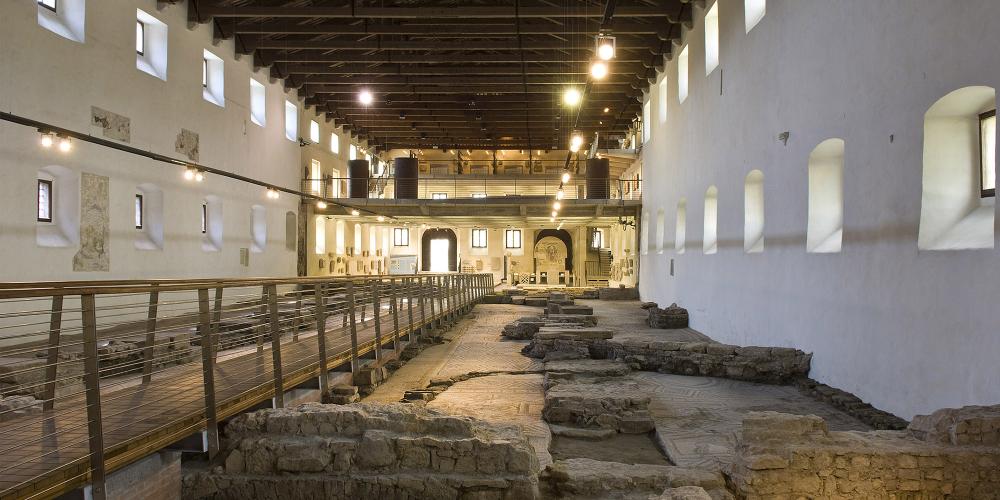Early Christian Museum

Once you step in, you'll feel as if you travelled back in time, as you walk amidst the remains of the layered mosaic floor of the ancient basilica. The two floor layers are from different epochs: the bottom one dates from around 345 AD, the top one from the following century. Both feature geometrical mosaics and include some interesting Greek and Latin inscriptions, which bear witness to the variety of goods traded in the river port nearby.
In the atrium, a Coptic altar with twelve stools for the Apostles is evidence of a type of Eucharistic table widely used in the East and in Egypt in the 4th century, where the convivial aspect was privileged as opposed to the sacrificial intent. Now take the stairs to the first floor and enjoy an eagle's view over the structures and floor of the basilica from the balustrade.
You will also admire the remains of the mosaic of the apse of a basilica once found in the borough of Ca’ Tullio, the so-called “Basilica della Beligna” because it had probably been erected on the site of an ancient temple dedicated to god Belenus, an ancient Celtic deity and patron of sheep and livestock. The mosaic shows a garden with twelve grazing lambs (probably the Apostles) next to a peacock (Jesus Christ), a symbol of resurrection and immortality. The most precious exhibits of the museum include a slab with a christening scene from the 4th century and an unfinished relief with saints Peter and Paul seen as they exchange a sign of reconciliation.
The second floor of the museum holds over 130 mostly funerary inscriptions dating back to the Early Christian era. They will help you imagine the community of the time (4th-5th c. AD). Don't miss the epigraph of Restutus (probably 5th c.), an African who died in Aquileia, where he “met great affection, greater than he would receive from his own parents”. The museum exhibition includes a few sculptures from the High Middle Ages, some of which were reused in the building at later stages.
Early Christian Museum
Tuesday to Sunday:
from 8:30 to 13:30
Free entrance

